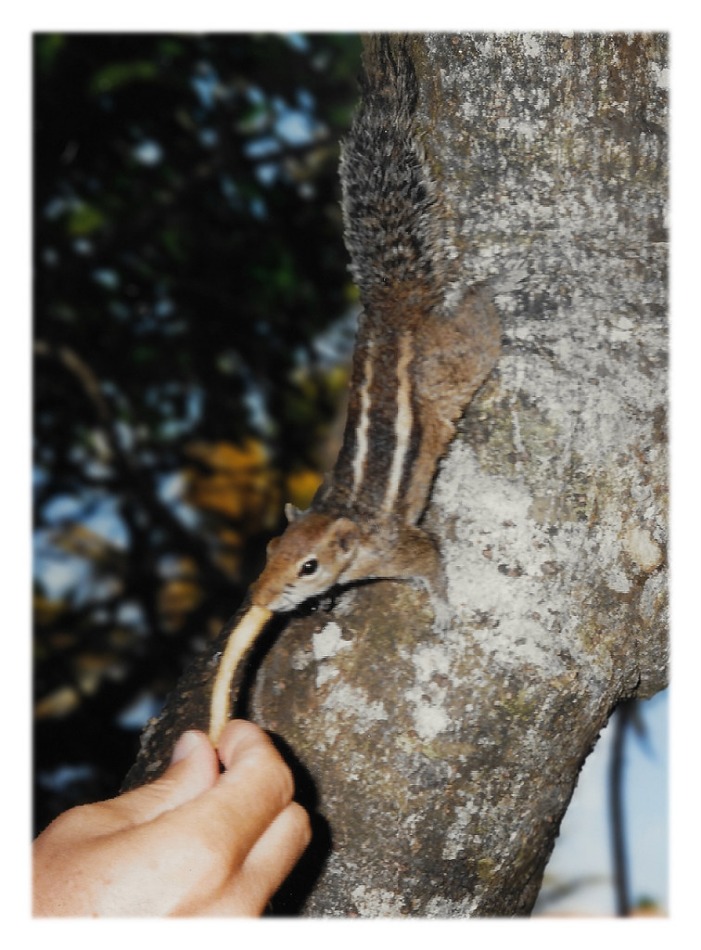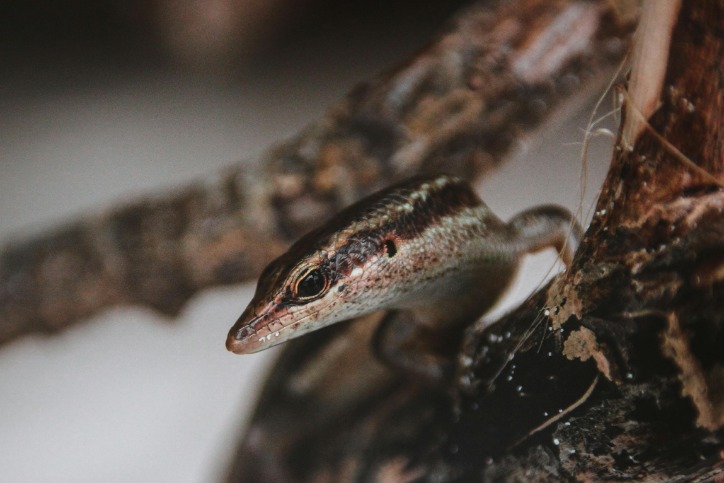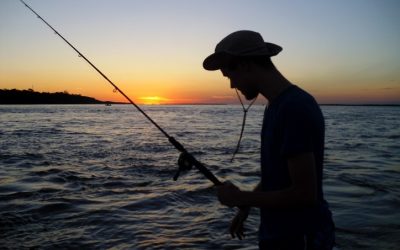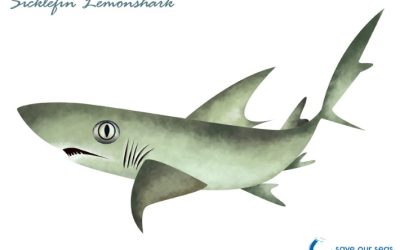Unique Wildlife of Seychelles
The Seychelles, an archipelago renowned for its stunning landscapes, is also home to a diverse array of unique wildlife. Its isolated islands foster the evolution of rare and endemic species found nowhere else on Earth. From vibrant birdlife to intriguing reptiles, Seychelles offers a captivating glimpse into a world of extraordinary animals that thrive in this pristine environment.
Endemic Bird Species
The Seychelles is renowned for its unique and diverse wildlife, particularly its endemic bird species that are found nowhere else in the world. These birds have evolved in isolation on the islands, resulting in distinctive characteristics that make them a vital part of the archipelago’s natural heritage. One of the most iconic endemic birds is the Seychelles Black Parrot, which is primarily found in the Vallée de Mai nature reserve on Praslin Island. This vibrant bird plays a crucial role in the local ecosystem and is a symbol of conservation efforts in the region. Another notable species is the Seychelles-tyrant Flycatcher, a small and agile bird that inhabits the lush forests of Mahé and Praslin islands. The Seychelles Turtle Dove, with its gentle demeanor and melodious call, adds to the island’s unique avian diversity. Protecting these endemic species is essential to preserving the Seychelles’ extraordinary natural environment and ensuring that future generations can enjoy these exceptional creatures in their natural habitat.
Vegetation and Plant Diversity
The Seychelles is renowned for its extraordinary biodiversity, particularly its unique wildlife and diverse vegetation that set it apart from many other islands. This archipelago hosts a range of endemic species, making it a vital conservation area and a haven for animal enthusiasts.
Animals in Seychelles include a variety of unique species found nowhere else on Earth, such as the Seychelles giant tortoise and the rare Seychelles black parrot. These species have evolved in isolation, adapting to the islands’ specific environments and contributing to the archipelago’s ecological richness.
The vegetation and plant diversity of Seychelles are equally remarkable. The islands feature lush tropical forests, distinctive palms, and endemic plant species that thrive in the island climate. These plants not only support the diverse animal populations but also play a crucial role in preserving the islands’ natural beauty and ecological health.
- Seychelles giant tortoise – one of the largest tortoises in the world, endemic to the islands
- Seychelles black parrot – the national bird, found only in Seychelles’ forests
- Umbrella trees – iconic coastal trees with distinctive umbrella-shaped canopies
- Voyage palm – native to Seychelles and an important part of the island’s flora
- Photo-synthetic plants endemic to specific islands, such as the Vallée de Mai palm garden in Praslin Island
Invertebrate Life Forms
The Seychelles is renowned for its remarkable biodiversity, especially its unique invertebrate species that contribute to the island’s distinct ecosystem. These invertebrates display fascinating adaptations and play vital roles in maintaining ecological balance across the islands.
- Seychelles Giant Land Crab: The endemic Seychelles giant land crab, also known as the Arc isopod, is a prominent terrestrial invertebrate. It can grow quite large and is primarily active during the night, helping to aerate the soil and recycle organic matter.
- Leaf-Cutting Ants: These ants are vital for their role in decomposition and plant cultivation. Their extensive underground networks are crucial for soil health and nutrient cycling on the islands.
- Seychelles Scorpion: A unique scorpion species endemic to the Seychelles, it inhabits forests and rocky areas, contributing to the regulation of insect populations.
- Rare Land Snails: The islands are home to several endemic snail species, such as the Seychelles Tree Snail, which are important for their role in nutrient recycling within forest ecosystems.
- Marine Invertebrates: Seychelles boasts a rich variety of marine invertebrates such as starfish, sea cucumbers, and mollusks, many of which are endemic and contribute to the health of coral reefs and surrounding marine habitats.
Mammals in Seychelles
Mammals in Seychelles are an intriguing aspect of the islands’ unique biodiversity. Although the archipelago is primarily known for its bird species and marine life, several native and introduced mammals have made a significant impact on the local ecosystem. From endemic species such as the Seychelles fruit bat to various introduced animals, mammals contribute to the ecological balance and cultural heritage of these tropical islands.
Existing Species and Their Habitats
Mammals in Seychelles are primarily represented by a small number of native species, with most being island-specific or introduced by human activity. The archipelago’s isolated environment has led to unique evolutionary adaptations among some species, although many native mammals are now extinct or critically endangered.
The Seychelles islands are home to the Seychelles white-eye, a small bird, and various bats, which are the only native terrestrial mammals. The Seychelles fruit bat, or Seychelles flying fox, is one of the most notable native mammals and plays a vital role in pollination and seed dispersal within its habitat. This species primarily inhabits the forests and wooded areas of islands such as Mahé, Praslin, and La Digue.
Aside from native species, many non-native mammals have been introduced by humans, including rats, cats, and monkeys, which often threaten native wildlife and ecosystems. These introduced species are commonly found across different habitats, including forests, coastal regions, and human settlements.
Conservation efforts are ongoing to protect the remaining native mammals and their habitats, especially forested areas that provide shelter and food sources for bats and other species. Protecting these habitats is crucial for maintaining biodiversity and ensuring the survival of Seychelles’ unique mammalian fauna.
Introduced Mammalian Species
Mammals in Seychelles are mostly native species, but several introduced mammals have also become part of the island’s ecosystem. The native mammals are limited due to the island’s isolated environment, with the Seychelles fruit bat being one of the few native species. Introduced mammalian species include rats, mice, and cats, which were brought to the islands through human activity and have established populations. These introduced species can sometimes threaten native wildlife and disturb the natural ecological balance. Efforts are ongoing to monitor and manage the impact of these introduced mammals to preserve Seychelles’ unique biodiversity.

Reptiles and Amphibians
Reptiles and amphibians are fascinating groups of animals that contribute to the rich biodiversity of Seychelles. These creatures are specially adapted to thrive in the islands’ unique environments, ranging from lush forests to rocky coastal areas. Understanding their roles and characteristics helps highlight the importance of conserving these intriguing animals in the Seychelles ecosystem.
Endemic Reptile Species
The Seychelles archipelago is renowned for its unique wildlife, including a diverse range of reptiles and amphibians. Many of these species have evolved in isolation, resulting in a number of endemic species found only within this tropical island nation. Protecting these endemic reptiles is crucial for maintaining the ecological balance and biodiversity of the islands.
Some notable endemic reptile species in Seychelles include:
- University of Seychelles Island Gecko
- Seychelles House Gecko
- Seychelles Giant Tortoise (extinct in the wild but preserved in captivity)
- Seychelles Anole
While amphibian species are less diverse in Seychelles, ongoing efforts aim to discover and preserve any endemic amphibians that may exist. The unique reptilian fauna of Seychelles highlights the importance of conservation efforts to prevent the loss of these species and to sustain the health of the islands’ ecosystems.
Presence of Marine Turtles
The Seychelles archipelago is home to a diverse range of reptiles and amphibians, including several species of marine turtles that play a vital role in maintaining the health of the marine ecosystem. These marine turtles are a remarkable part of the islands’ natural heritage and attract many conservation efforts and eco-tourism activities.
- Green turtles (Chelonia mydas) are the most common marine turtles in Seychelles, often seen grazing on seagrass beds and nesting on sandy beaches.
- Hawksbill turtles (Eretmochelys imbricata) are critically endangered and known for their beautiful patterned shells; they frequently nest on Seychelles beaches and feed on sponges found on coral reefs.
- Olive Ridley (Lepidochelys olivacea) and Leatherback turtles (Dermochelys coriacea) also visit Seychelles waters, especially during the nesting season, contributing to the ongoing conservation efforts.
These marine turtles are protected species, and the islands have established numerous marine protected areas to support their populations. The presence of these turtles highlights the importance of Seychelles’ unique marine environment and the need to conserve these vital species for future generations.
Amphibian Populations and Conservation
Reptiles and amphibians in Seychelles represent a unique and vital part of the archipelago’s rich biodiversity. These animals have evolved in isolation, leading to several endemic species that are found nowhere else in the world. Many of these species, particularly certain amphibians and reptiles, face significant threats due to habitat loss, invasive species, and climate change, which have led to alarming declines in their populations.
Amphibian populations in Seychelles are particularly vulnerable because they depend heavily on specific environmental conditions. Efforts are underway to monitor and protect these populations through habitat preservation and breeding programs. Conservation initiatives focus on safeguarding critical habitats such as forests and wetlands, which are essential for the survival of species like the Seychelles tree frog.
Reptile conservation in Seychelles involves controlling invasive species such as rats and non-native snakes that threaten native reptiles. Protected areas and national parks serve as refuges for these animals, and community engagement plays a crucial role in conservation strategies. The goal is to ensure the survival of sacred species like the Seychelles giant tortoise and various endemic geckos, which are important not only ecologically but also culturally for the local communities.
Overall, ongoing research, habitat management, and public awareness are essential components of amphibian and reptile conservation in Seychelles. Protecting these animals preserves the archipelago’s unique ecosystems and maintains its status as a global biodiversity hotspot.
Marine Life of Seychelles
The Marine Life of Seychelles is a vibrant and diverse ecosystem renowned for its stunning coral reefs, colorful fish, and majestic marine creatures. Located in the Indian Ocean, this archipelago offers a unique habitat where numerous species thrive, making it a top destination for marine enthusiasts and divers alike. Exploring the waters of Seychelles reveals a captivating world teeming with life, from graceful manta rays to intricate coral formations.
Coral Reef Ecosystems
The marine life of Seychelles is renowned for its vibrant and diverse coral reef ecosystems that teem with an array of fascinating animals. These coral reefs serve as vital habitats for numerous species, including colorful reef fish, majestic sea turtles, and elusive reef sharks. The waters surrounding Seychelles are home to over 1,000 species of fish, such as parrotfish, angelfish, and clownfish, which contribute to the vivid underwater scenery. Additionally, the reefs support various invertebrates like sea urchins, starfish, and mollusks, enhancing the intricate biodiversity of the region. Iconic marine animals like hawksbill and green sea turtles frequently visit these waters for feeding and nesting. The coral reefs not only provide shelter and sustenance for these creatures but also play a crucial role in protecting coastal areas from erosion and supporting the local fishing industry. Overall, Seychelles’ coral reef ecosystems are a remarkable example of marine biodiversity, offering a glimpse into a vibrant underwater world that is both ecologically significant and visually breathtaking.
Fish Diversity
The marine life of Seychelles is renowned for its astonishing diversity and vibrant ecosystems. Fish diversity in this archipelago includes a wide array of species, from colorful reef fish to larger pelagic species. The coral reefs surrounding Seychelles provide a rich habitat for numerous fish species such as clownfish, angelfish, butterflyfish, and groupers, contributing to the region’s reputation as a premier diving destination. Additionally, the waters are home to various species of sharks, like reef sharks and hammerheads, as well as rays and other marine species that thrive amidst the coral formations. This exceptional variety of fish plays a crucial role in maintaining the ecological balance of Seychelles’ marine environment, making it an important area for conservation and marine biodiversity. The diverse fish population also supports local fisheries and enhances the overall health of the marine ecosystem, attracting eco-tourists and marine enthusiasts alike.
Marine Mammals and Their Habitats
The marine life of Seychelles is renowned for its incredible diversity and vibrant ecosystems, making it a premier destination for marine enthusiasts. The islands are surrounded by clear turquoise waters, rich coral reefs, and abundant marine fauna, which create essential habitats for various marine mammals and other sea creatures.
Marine mammals in Seychelles primarily include dolphins, whales, and occasional sightings of dugongs. These animals inhabit the warm Indian Ocean waters, utilizing different habitats such as coral reefs, deep-sea areas, and coastal waters. Their presence contributes to the ecological health of the marine environment and attracts researchers and tourists worldwide.
- Dolphins: Several species of dolphins, including bottlenose, spinner, and common dolphins, can be frequently observed. They are often seen hunting, socializing, and playing near boat tours, especially around Mahe, Praslin, and La Digue Islands.
- Whales: Seychelles is a prime spot for whale watching, particularly for species like humpback whales, which migrate through these waters between July and September. Sperm whales and killer whales are also occasionally spotted.
- Dugongs: While rare, sightings of dugongs, gentle herbivorous marine mammals related to manatees, have been reported in the seagrass beds of Seychelles’ coastal waters.
The habitats of these marine mammals are diverse, including:
- Coral Reefs: Critical for supporting lesser-known marine species and providing shelter for juvenile fish and some marine mammals.
- Open Ocean: Home to migratory species such as whales and large dolphins.
- Seagrass Beds: Important feeding grounds for dugongs and certain fish species that share their habitat with marine mammals.
Protecting these habitats is vital for maintaining the rich marine biodiversity of Seychelles, ensuring the survival of these remarkable animals for future generations. Conservation efforts and sustainable tourism practices help preserve the delicate balance of this vibrant marine ecosystem.
Conservation Efforts and Challenges
Conservation efforts in Seychelles focus on protecting its diverse and unique animal species, many of which are endangered due to habitat loss, invasive species, and human activities. The islands’ rich biodiversity presents both opportunities and challenges for preserving native wildlife and maintaining ecological balance. Addressing these challenges requires ongoing commitment and innovative strategies to ensure that future generations can enjoy the region’s incredible animal heritage.
Protected Areas and Reserves
Conservation efforts in Seychelles are crucial for protecting its unique and diverse animal species, many of which are endemic and highly vulnerable to habitat loss and human activities. The government, along with international organizations, has established protected areas and reserves to conserve critical habitats and safeguard wildlife populations. These protected zones help in maintaining ecological balance, supporting breeding programs, and preventing illegal poaching and logging. However, challenges such as limited resources, invasive species, climate change, and increasing tourism pressure continue to threaten these conservation initiatives. Efforts to promote sustainable tourism, strengthen enforcement of protection laws, and engage local communities are essential for ensuring the long-term survival of Seychelles’ rich animal biodiversity. The establishment and management of protected areas and reserves remain key strategies in the ongoing effort to preserve the islands’ natural heritage for future generations.
Threats to Wildlife
Conservation efforts in Seychelles are crucial for preserving its unique and diverse wildlife, including many endemic species. Initiatives such as protected marine parks, wildlife refuges, and sustainable tourism programs aim to safeguard the islands’ rich biodiversity. However, these efforts face several challenges, including limited resources, balancing economic development with conservation, and enforcing environmental laws effectively. Additionally, local communities and stakeholders are essential partners in conservation, requiring education and engagement to ensure long-term success.
Among the most significant threats to Seychelles wildlife are habitat destruction due to agriculture, urbanization, and infrastructure development. Invasive species, such as rats, cats, and certain plants, also pose a serious risk by preying on or outcompeting native animals. Climate change further exacerbates these threats by causing sea level rise, coral bleaching, and changing weather patterns, which impact habitats and food sources. Poaching and illegal fishing activities continue to threaten vulnerable species, including sea turtles and bird populations. Addressing these threats requires a comprehensive and collaborative approach to ensure the survival of Seychelles’ unique animal life for future generations.
Conservation Programs and Success Stories
The Seychelles, renowned for its rich biodiversity and unique endemic species, faces numerous conservation efforts aimed at preserving its delicate ecosystems. Conservation programs in the islands focus on protecting endangered species such as the Seychelles giant tortoise, the Seychelles black parrot, and various coral reefs. However, these efforts are often challenged by factors like habitat destruction, illegal poaching, invasive species, and the impacts of climate change, including rising sea levels and coral bleaching. Despite these hurdles, there have been notable success stories, such as the head-starting initiatives that have helped increase populations of endangered tortoises and the establishment of marine protected areas to conserve vital coral reefs. Community engagement, international support, and innovative conservation strategies continue to play vital roles in safeguarding Seychelles’ unique animal species for future generations.





0 Comments